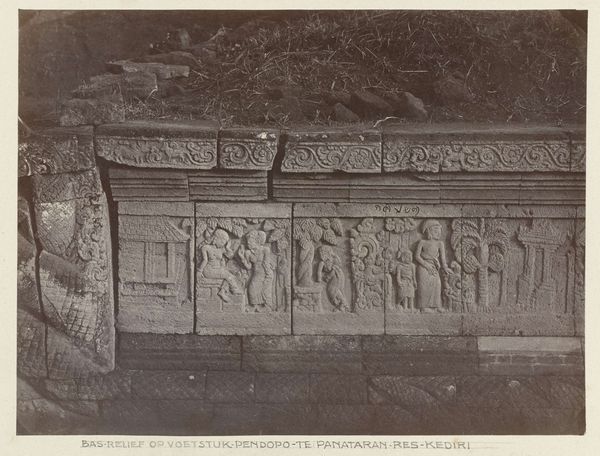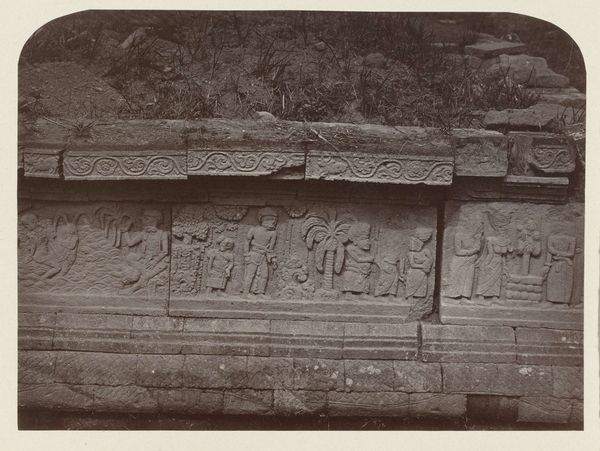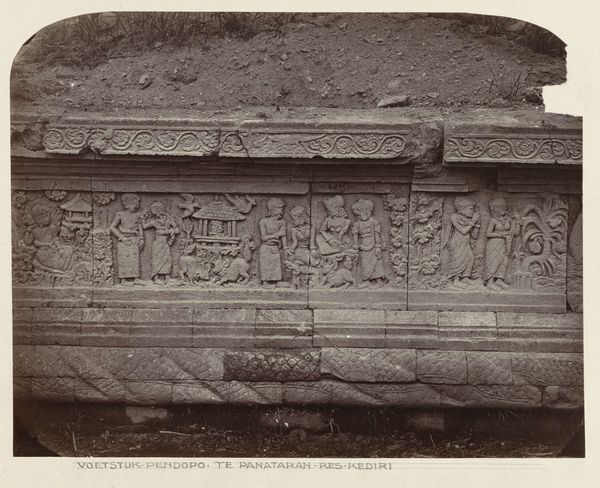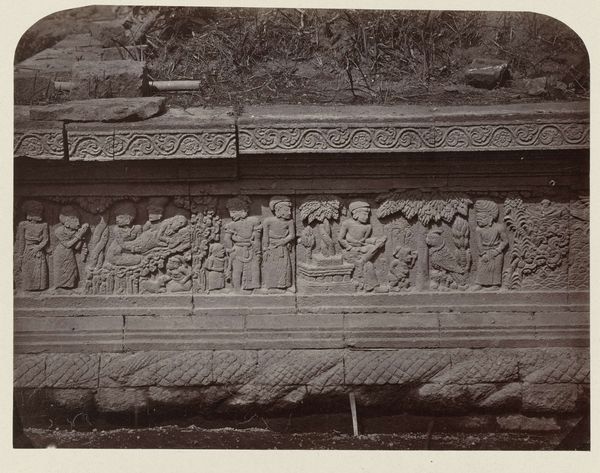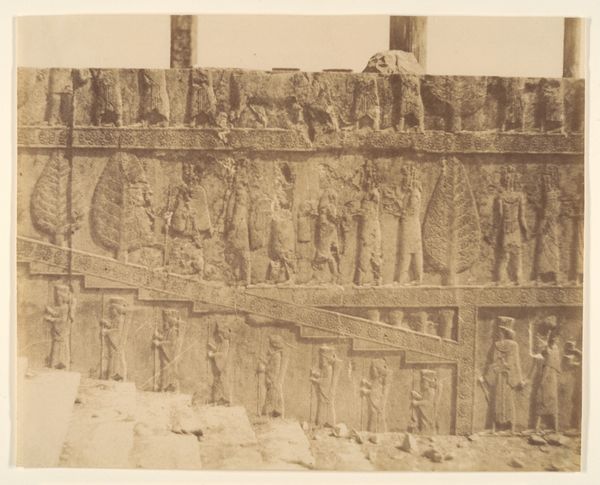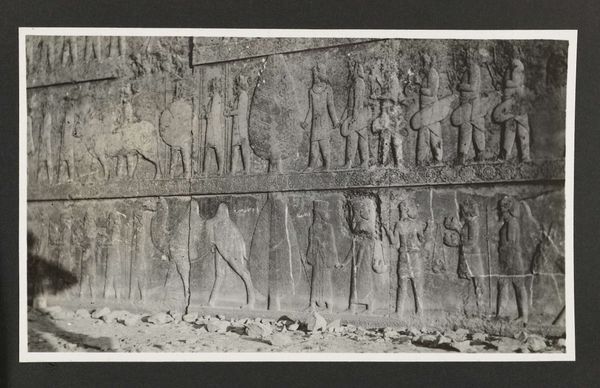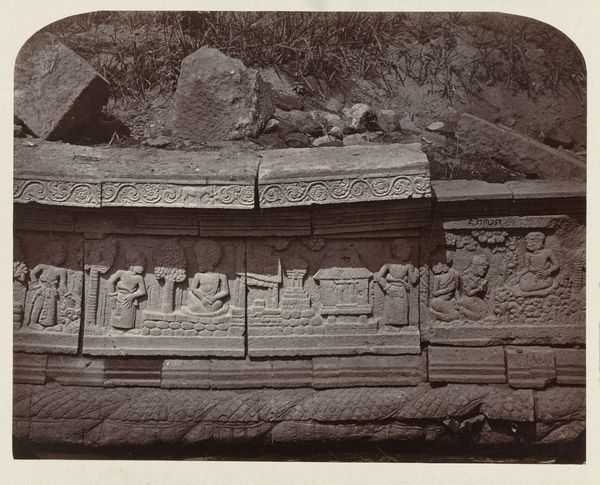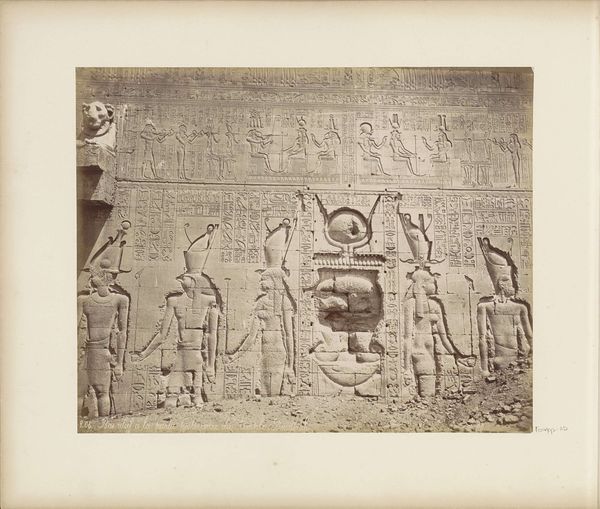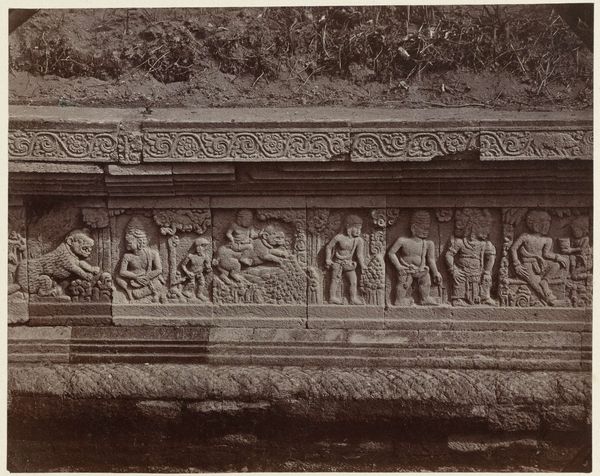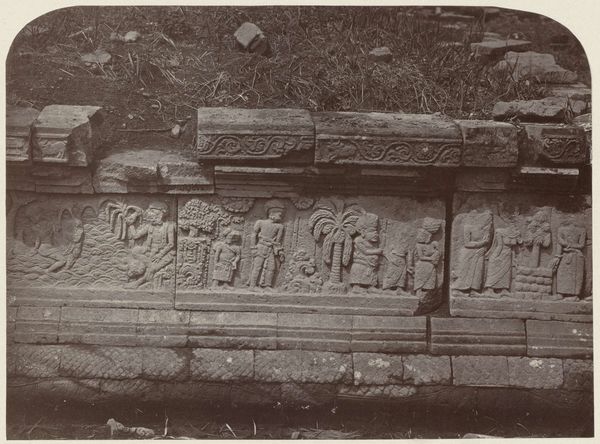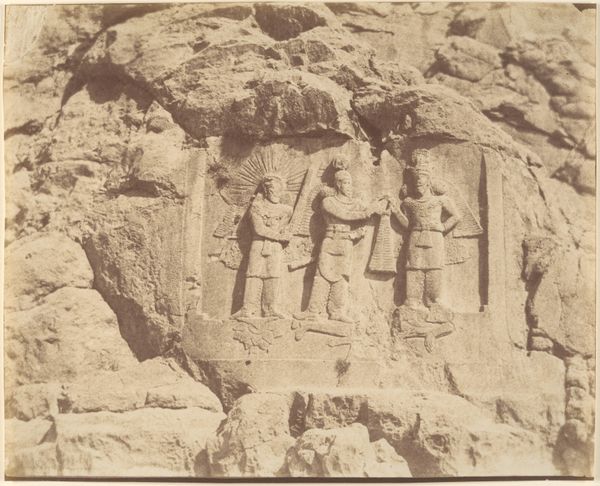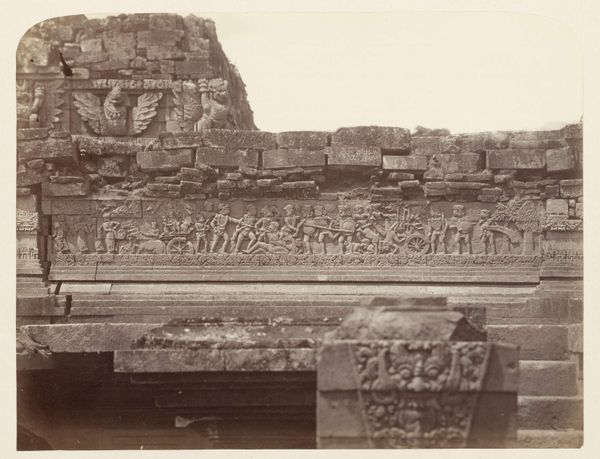
Reliëf IV in Bishapur, voorstellend de Sassanidische koning Bahram II en een Arabisch gezantschap c. 1880 - 1895
0:00
0:00
relief, photography, sculpture
#
portrait
#
sculpture
#
relief
#
figuration
#
photography
#
ancient-mediterranean
#
sculpture
#
islamic-art
#
history-painting
Dimensions: height 168 mm, width 224 mm
Copyright: Rijks Museum: Open Domain
Curator: This remarkable photograph by Antoine Sevruguin, dating from around 1880 to 1895, captures the bas-relief known as "Relief IV in Bishapur, depicting the Sasanian King Bahram II and an Arab Delegation." Editor: It projects an imposing air. Even through the photo's soft focus, there's a weightiness to the stone, and to the solemnity of the figures etched upon it. You can feel the sheer labor involved. Curator: Exactly! Sevruguin's photograph not only documents the existence of the relief but also provides a crucial historical record, given the state of preservation—or rather, the erosion—that afflicts these open-air carvings over time. Photography becomes a preservation tool, documenting craft. Editor: The king, centrally placed, becomes the focal point. Note the visual vocabulary employed: he’s flanked by attendants, and there's the strategic use of horses as symbols of status and control, which evokes notions of power dynamics and legitimization. The imagery evokes imperial power made visible, creating collective memory. Curator: Considering the material processes here is essential. Think about the labor involved in carving these massive stone reliefs and Sevruguin's own work in staging the photograph: he captured this immense relief, and its location certainly dictated his photographic process—light availability, transport of equipment, the very material limitations must be appreciated. Editor: Beyond that record, I see Sevruguin acting as an interpreter of cultural memory. This scene echoes down through Islamic and Persian art, this symbolic dance of power, and offering tributes. Curator: The cultural significance is clear. Think of the economics and networks that would’ve circulated in and out of Bishapur. Editor: Definitely. It allows us to contemplate both the permanence of certain human endeavors, and the vulnerability of even the most impressive creations. Curator: A worthwhile record that shows how context always dictates both the subject and how it is represented. Editor: An insightful way to conclude our dialogue on "Relief IV." It offers perspectives from art history to material context, which makes Sevruguin's artwork incredibly insightful.
Comments
No comments
Be the first to comment and join the conversation on the ultimate creative platform.
